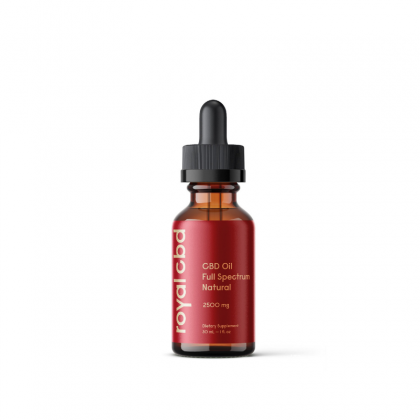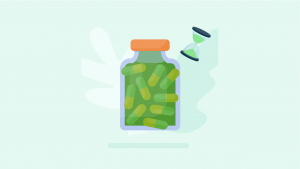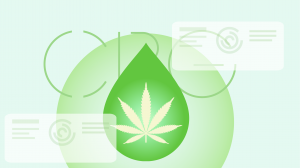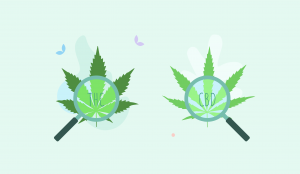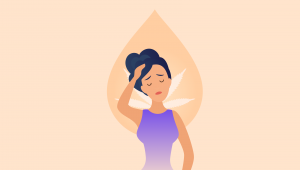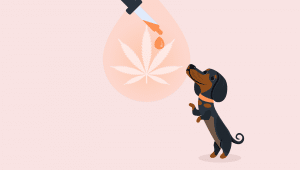| Total CBD: | 500 – 2500 mg |
| Potency: | 16.6 - 83.3 mg/mL |
| Cost per mg CBD: | $0.12 – $0.18 |
| Extract Type: | Full-spectrum |
| THC Content: | <0.3% |
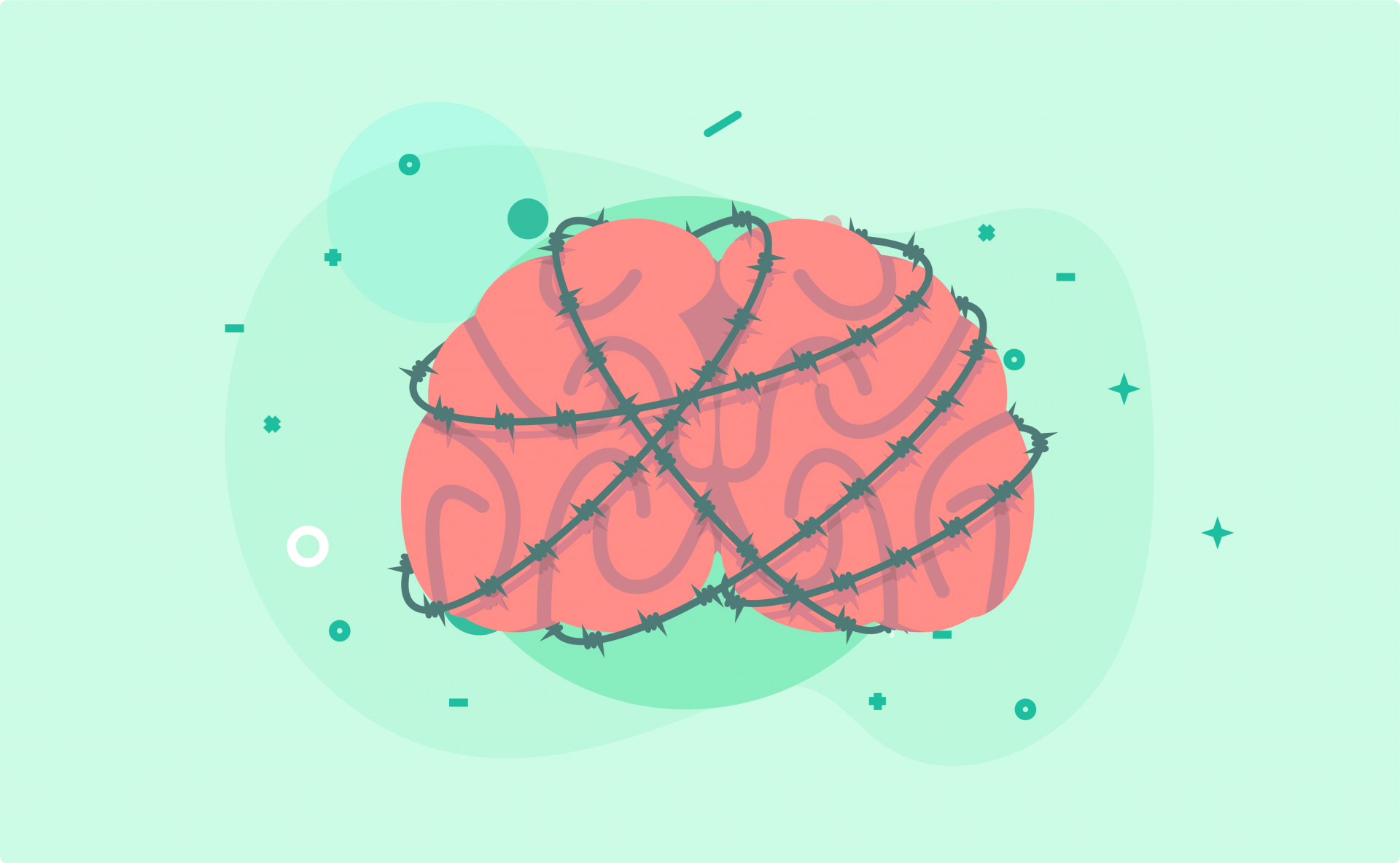
Evidence based
Best CBD Oil for Migraines & Headaches: Benefits, Dosage, & Side-Effects
Migraines can turn an otherwise normal day into a complete write-off — and they’re notoriously hard to treat.
CBD may help by regulating serotonin release, fighting inflammation, controlling vascular spasm, and more.
In this article, you’ll learn how CBD can help with migraines, how much CBD oil to use, and where to find the best CBD oils for cluster headaches and migraines.
Best CBD Oils For Migraines
- Royal CBD Oil — Best CBD Oil For Migraine Headaches
- Gold Bee CBD Oil — Best Organic CBD Oil
- Endoca CBD Oil — Best CBD Oil For Migraines (Europe)
Can CBD Oil Help With Migraines?
One of the most common traditional the cannabis plant is for treating headaches.
Over the past few years there’s been a lot of research exploring the impact of CBD and other cannabis-derivatives for treating migraines and other forms of headaches.
Hemp extracts have so far been proven effective for chronic headaches [18], migraine headaches [6], headaches resulting from medications [19], cluster headaches [20], intracranial hypertension [21], and multiple sclerosis neuropathic head pain (trigeminal neuralgia) [23].
CBD (cannabidiol) is the primary compound responsible for the painkilling benefits of the plant and the most relevant compound for the anti-migraine effects.
Other related compounds (called cannabinoids) offer additional support. The best CBD oils for migraine headaches are made from a full-spectrum extract that contains a variety of active ingredients — such as CBG (cannabigerol), CBC (cannabichromene), THC (tetrahydrocannabinol), and several hemp-derived terpenes.
All of these compounds work alongside CBD to support the painkilling effects of CBD and provide other anti-migraine benefits.
Some of these compounds prevent the release of serotonin from platelet cells (one of the main causes for migraine attacks), others regulate inflammation and blood flow to the brain.
The benefits of CBD oil for migraines include:
- May prevent serotonin-related causses
- Inhibits brain inflammation
- Prevents or alleviates vascular spasms
- Alleviates head pain
1. May Prevent Serotonin-Release (Cause For Migraines)
We’ve long known about the ability for cannabis to inhibit the release of serotonin from the platelets [4].
This effect could help prevent and treat migraines caused by excessive serotonin release from platelets — which is one of the predominant theories for the underlying cause of migrane attacks (more on this later).
Interestingly, this same effect on serotonin release is also considered one of the primary ways CBD can be used to treat nausea and vomiting, which are also common symptoms associated with migraine headaches.
2. Inhibits Brain Inflammation
One of the ways marijuana was used in the past to treat headaches, was by wrapping its wet leaves around the head and neck for several hours at a time [6]. This practice, mainly documented among the Sumerians, is most likely a direct result of these anti-inflammatory effects.
Modern treatments of migraines often involve anti-inflammatories such as Aspirin or Tylenol.
CBD exerts its effects through a number of different anti-inflammatory mechanisms including adenosine [8] and NF-kB [9]. Both of these inflammatory channels are considered the primary causes of migraine headaches.
3. Reduces Vascular Spasms
The trigeminal nerve is responsible for causing the vascular system in the brain to spasm out of control — causing cluster headaches and migraines.
One of the main reasons this happens is hyperactivity involving the N-methyl-D-aspartate (NMDA)/glutamate system. This system is responsible for causing many of the stimulating activities in the brain.
It’s like the gas pedal in the car. Once activated, RPM increases and the car goes faster.
In the brain, it’s very similar — when NMDA is active, your neurons fire faster and faster.
Much like a car, the brain also has a brake pedal. We call this Gamma-aminobutyric acid – or GABA. It slows us down and helps us relax, directly opposing the effects of NMDA.
In some cases, NMDA activity can go out of control, causing the trigeminal nerve controlling the vascular system in the brain to go haywire and spasm. This results in severe migraine headaches, which can last hours on end.
CBD slows this process down by stepping on the brake pedal (GABA) [10], similar to Valproic Acid, slowing everything down, and stopping the arterial system spasm.
4. Alleviates Head Pain
One of CBD’s main actions is blocking pain transmission.
CBD is a master modulator. This means that it doesn’t work on any single pathway, forcing it in one direction or another.
This effect allows CBD to help regulate how much pain we perceive. Like playing with the volume control on your speaker system it can help “turn down” the volume on pain.
When we experience migraine headaches, the pain volume is cranked all the way up.
CBD helps promote the processes that are meant to control this by telling some of the responsible receptors (such as the TRPV1 and opioid receptors) to step up and turn the volume back down to an appropriate level.
There are 10 times as many CB1 receptors as there are mu-opioid receptors in our central nervous system and pain pathways [16,17]. This means the CB1 endocannabinoid receptors are likely a key regulator of pain sensation within the brain, and intimately involved with the regulation of migraine or cluster headache-related pain.
What’s the Dose of CBD Oil for Migraine Headaches?
Dosing CBD can be a challenge, especially since it tends to react differently in everybody.
For some people, a small dose is all that’s needed to produce effects, while others need much larger doses. This can make dosing difficult at first, but once you understand how it works in your body, it’s very straightforward.
There are some general CBD dosage guidelines you can follow for figuring out the right dose to start with, and how to dial it effectively.
With that said, it’s important to note that many people who are prone to migraines tend to be more sensitive to chemicals. For this reason, we recommend starting slightly below the lowest recommended dosage for your weight and build up slowly from there.
CBD Dosage Calculator
How Long Should I Use CBD Oil for Migraines?
The key to using CBD oil effectively for migraines is to use it regularly over long periods of time, in addition to your routine prescriptions.
By taking small doses of the oil throughout the day – usually once in the morning and once in the evening — you’ll be able to improve your body’s natural ability to maintain neurovascular balance and avoid spiraling out of control into a debilitating migraine attack.
Many people taking CBD oil for this will increase the dose when they feel a migraine attack coming on to stop it in its tracks or reduce its overall severity.
For example, a migraine sufferer might take 5 mg worth of CBD in the morning and 5 mg in the evenings most days. When they feel a migraine coming on, they take another 5 mg every 2 or 3 hours until it subsides. However, you should also keep taking your prescription medications for prevention and treatment.
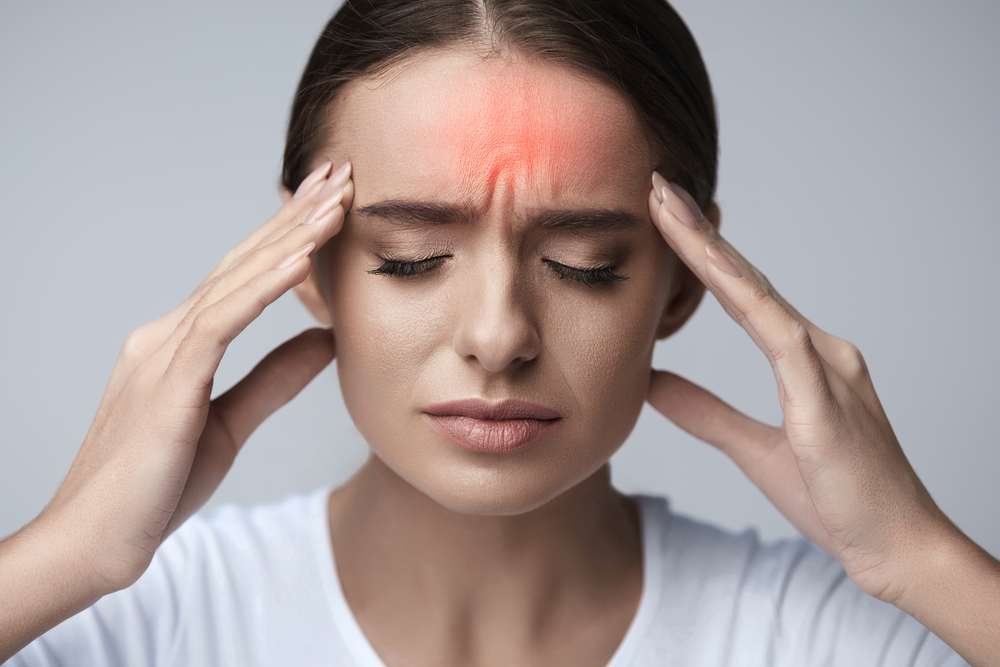
What are Migraines?
Migraines are a type of severe, recurring headache accompanied by at least one, or various, physical symptoms such as nausea, vomiting, and sensitivity to light or sound.
In many cases, these headaches only affect one side of the head and cause throbbing pain. They may also be agitated by movement, and are of enough intensity to interfere with daily function.
Migraines typically last 4-8 hours (typically all day), but can last as long as three days (72 hours).
Along with headaches, migraine sufferers also commonly experience other symptoms such as nausea, sensitivity to light, sound, and smells, as well as visual disturbances.
Four Phases of Migraine Headaches
Migraines tend to have distinct phases. These aren’t always present, and they can vary a lot from one episode to the next.
Phase 1: Prodromal Phase
This phase can begin either days, hours, or minutes before a migraine attack — it’s a common warning sign that a migraine is soon to ensue.
It may involve a wide variety of symptoms that appear before the actual headache. People with chronic migraines tend to learn what their triggers and early symptoms usually are. These feelings should prompt people to take their preventive medications.
Some common symptoms of the prodromal phase include:
- Irritability
- Depression
- Euphoria
- Muscle aches and stiffness
- Constipation OR diarrhea
- Fatigue
- Food cravings
- Sensitivity to stimuli (light, sound, smell, taste, touch)
Phase 2: Aura Phase
During the aura phase, people experience strange changes in their vision and/or perception. It can change the way colors look, how we interpret smell and taste and can alter our mood dramatically.
The aura phase typically lasts about 1 to 2 hours.
For most people who experience regular migraines, this is the most reliable indication that they are about to have an episode. Some people can even estimate how severe their migraine will be from the severity of the aura phase.
Symptoms of the aura phase can include:
- Vision disturbances
- Changes in perception of taste, light, smell, sound, and touch
- Speech or language problems
- A spinning sensation
- Muscle weakness
- Auditory or visual hallucinations
- Paranoia
- Fatigue
Phase 3: Pain (Headache) Phase
This is the main phase we think of when we talk about migraines.
This phase can vary a lot in severity and is usually very unpredictable, even in people who have regular episodes of migraine headaches.
In most cases, migraine headaches only affect one side of the head but can affect both sides equally as well. Some people feel the pain at the front of the head, others at the back, and some in the center.
However, if you suddenly experience the worst headache of your life that feels like a clap of thunder all over your head, or have had a migraine for over 72 hours, please go to your nearest emergency department right away.
Symptoms of the pain phase include:
- Severe throbbing head pain
- Sensitivity to sensory information (light, sound, taste, smell, touch, and movement)
- Nausea/vomiting
- Blurred vision
- Difficulty speaking
- Spinning sensation
- Frequent urination
- Pale skin
- Sweating
- Constipation or diarrhea
- Neck pain
- Confusion
- Irritability
Phase 4: Postdrome Phase
The postdrome phase happens after a migraine has settled.
Many people who experience these say they resemble a hangover but can last for several days. Some will even feel pressure or low-grade pain in the places where most of their migraine affected.
It can leave people feeling fatigued and depressed for a few days after the event.
In some cases, people may find that during this phase they feel unusually refreshed and clear-headed. Some reports even suggest a euphoric state for as long as a week after the event.

What Causes Migraine Headaches?
Migraine headaches tend to be very elusive to researchers. They’re hard to predict and even harder to trace back to any particular cause. Migraine headaches tend to be very elusive, however, researchers today have a better understanding of the basis of migraines.
From stress and hormone levels to allergies and chemical exposure — these are all considered factors and potential causes for migraines but can vary a lot from one person to the next.
Common Migraine Triggers
- Mental — Stress, emotional upset
- Endogenous — Hormonal changes, fasting, fatigue, sleep disturbances
- Exogenous — Certain foods (chocolate, wine, aged cheese, etc.), alcohol, smoke, allergens, nitrates, oral contraceptives, glutamate, tyramine
- Other — Weather, bright colors, odors, temperature changes, altitude
One of the main factors new research is investigating is hormone levels.
This is because migraines are more common in young boys just before puberty and 2 or 3 times more likely in women than men. Additionally, migraines tend to decrease during pregnancy and menopause.
All of these factors can be traced back to fluctuations in hormone levels, though scientists still don’t know exactly how this works, but there are several strong theories as we’ve listed below.
There are several prominent theories at play [14] which are most likely the actual causes of hormone-related migraines including:
- Serotonin/platelet theory
- Sensitization of peripheral and central brain areas from inflammation
- Muscular spasms of the veins and arteries
Let’s cover some of the main ones now and how they’re correlated with CBD.
1. Serotonin & Platelet Theory
Serotonin is a neurotransmitter and has many roles in the body. It regulates much of our emotion, sexual function, hormone balance, and memory.
One of the leading theories for the cause of migraines is an excessive release of serotonin from platelet triggers.
What does this mean?
A platelet is a type of cell that floats around in the bloodstream and plays an important role in the way we monitor and control coagulation and inflammation in the body — among other things. One of the ways we do this is by releasing small amounts of serotonin.
In some cases, these platelets can overreact to the situation and dump large amounts of serotonin into the bloodstream, causing blood vessels to widen and lose pressure. This essentially causes regions located near the area to go into shock [1].
When this happens in the blood vessels of the brain, it can cause the widening of blood vessels and release of inflammatory signals causing symptoms such as severe pain, disorientation, and hypersensitivity to stimuli like sight and smell.
What this means: If we can stop the excessive release of serotonin from the platelet cells, we may be able to stop or prevent migraine headaches.
2. Inflammation (Sensitization)
We need inflammation to stay healthy.
It’s our bodies’ way to trap and destroy invading bacteria and viruses. Inflammation promotes healing and prevents further damage to the body by causing pain and redness which reminds us to be careful with that part of the body.
Unfortunately, inflammation can go out of control causing many different health problems for the body.
One such problem is migraine headaches.
A protein found inside the cells, known as nuclear factor kappa B (NF-kB for short) is responsible for regulating the creation of inflammatory compounds in the cells.
NF-kB is a major driving factor behind migraine headaches. When this protein goes out of balance, it can cause an overabundance of inflammatory messengers called cytokines (IL-1B, IL-6, and TNF-a). These messengers then trigger a wave of inflammation and pain in the nervous system. [2].
Since these messengers are short-lived, the problem usually subsides within several hours, causing the migraine to typically last all day, and before gradually disappearing.
This cause is especially common in people who tend to be over-reactive to foods and other allergens. People who suffer from asthma and hay fever are also at a higher risk for migraines caused by this effect.
What this means: If we can stop the overactivation of NF-kB, we may be able to prevent migraines.
3. Muscular Spasms of the Veins and Arteries
All of our arteries have a thin layer of muscle lining them.
These muscles are designed to expand and contract to control our blood pressure and to allow us to shunt blood into vital organs such as the brain when need be.
A good example of when do this is when we’re out in the cold.
To preserve the core body temperature, the blood vessels in our hands, feet, and nose will tighten to slow blood flow in the area. This helps to keep the warm blood closer to the internal organs.
There are other reasons for shunting blood as well, such as after a meal when we need more blood flow to the digestive organs or after a traumatic injury where we need to bring fresh oxygen and nutrients to the damaged site.
This system is especially sensitive in the delicate regions of the brain.
When the trigeminal ganglion is activated by the cortical spreading depression, it releases pro-inflammatory molecules onto] the muscles controlling its blood vessels that can widen and spasm, causing severe migraine headaches.
What this means: If we can stop excessive vascular spasms among the arteries feeding the brain, we can stop migraines.
How Are Migraine Headaches Treated?
Treating migraines focuses on both prevention as well as treatment, but still involves a lot of trial and error, as well as time due to everyone’s unique chemistry.
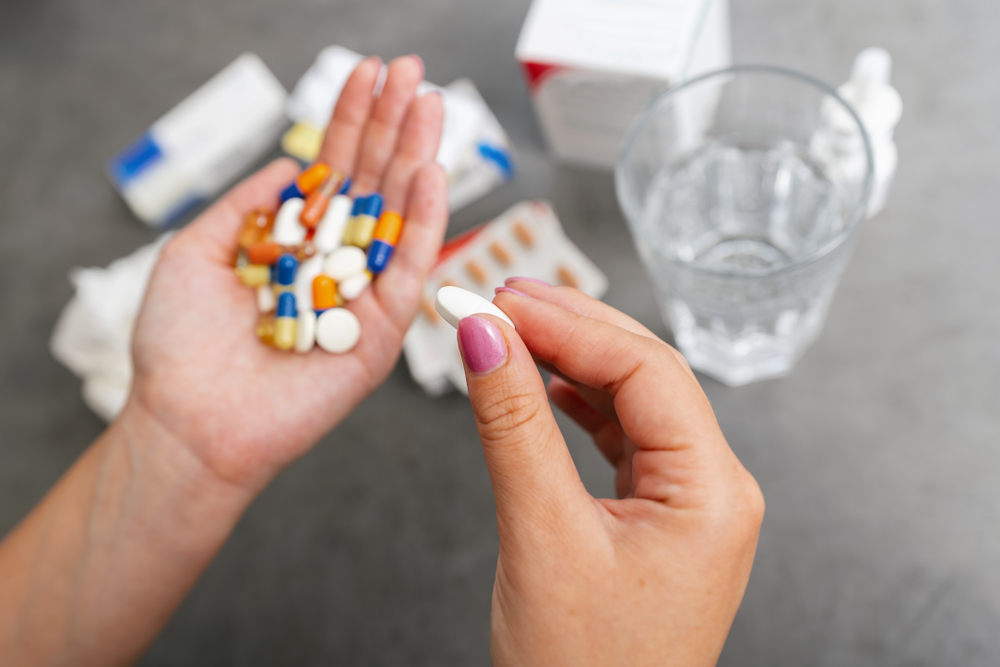
This is because the medications used to address any of the three causes of migraines are different, and it takes up to 6 weeks for a medication to build up enough to have any effect.
Most of the drugs for migraines have about a >50% chance of working after several weeks. If one medication doesn’t work, doctors will usually move on to another one. If your migraines happen 15 or more days per month, then scalp botox injections are also an effective new, insurance-covered prevention option.
Most people who suffer migraines will use [their preventive medications and prescriptions. However, milder migraine sufferers may use] over the counter pain medications such as Excedrin, Tylenol, Ibuprofen, and Aspirin, however, this only helps curb the intensity of mild episodes. They do little for actually clearing up a migraine and are rarely strong enough to completely alleviate symptoms. Most often they’re used in conjunction with routine prescription medication.
Treatment Options for Migraine Headaches:
- Caffeine
- Onabotulinum toxin(Botox)
- NSAIDs
- Ergot alkaloids
- Divalproex/Sodium Valproate
- Eletriptan
- Frovatriptan
- Almotriptan
- Metoprolol
- Naratriptan
- Propranolol
- Rizatriptan
- Sumatriptan
- Topiramate
- Zolmitriptan
Most of these medications come with a long list of negative side effects such as ulcers, heart vessel spasms, kidney damage. Unfortunately for some people, there is only minimal relief available from migraine headaches.
For this reason, many people who suffer recurrent migraines are turning for help from a different source of medicine. It’s important to note that many medications interact with CBD and other alternative treatments.
Herbal Medicine for Migraines
There are obvious benefits to conventional medicine over plant-based medicine. However, this is not the case for migraine headaches.
There are many herbs with well-established benefits of treating and preventing migraine headaches.
Feverfew, for example, is a small plant in the daisy family that offers direct improvements on all three processes thought to be causing migraine headaches [15].
Another plant that has shown significant potential in addressing the causes and symptoms of migraine headaches is the cannabis plant.
Plants such as these often contain dozens, if not hundreds of different chemicals. Unlike pharmaceuticals, this makes it difficult to characterize each compound’s precise effects, giving them the added benefit of providing what we could call a multifaceted approach to treatment.
This means that the series of chemicals contained in cannabis may possibly offer similar benefits for a medical condition, but do it through different mechanisms.
For example, the cannabis plant contains as many as 80 different cannabinoids and well over 100 different terpenes in its leaves and resin.
Some of these cannabinoids help to stop arterial spasms, others stabilize immune cells and more.
By providing multiple therapeutic avenues for a particular condition, and by sharing many common underlying mechanisms, cannabis could potentially stand a better chance of fixing the problem.
This is a common technique oncologists use to fight cancer. By using a cocktail of chemotherapeutic drugs, each with slightly different modes of action, they get a far greater chance of choosing the right one and curing their patient’s cancer.
Key Takeaways: Can CBD Oil Help With Migraines?
Migraines are many things— common, debilitating, and mysterious.
Doctors and neuroscientists still don’t have a definitive explanation for what causes them or how to stop them.
There are, however, a lot of promising theories that we can start with when looking for treatments for the condition. From what is known, there are common pathways that CBD may also act upon to help.
CBD oil has recently been on the rise as a new and potentially effective migraine treatment and prevention method. It works through several different yet related pathways to resist the processes driving migraine headaches.
It’s likely that we’ll see this use of CBD and CBD oil become a standard adjunctive treatment for the condition in the next few years as more research sheds light on the incredible benefits of this humble plant extract.
References Cited in This Article
- Cloutier, N., Allaeys, I., Marcoux, G., Machlus, K. R., Mailhot, B., Zufferey, A., … & Zhi, H. (2018). Platelets release pathogenic serotonin and return to circulation after immune complex-mediated sequestration. Proceedings of the National Academy of Sciences, 201720553.
- Bruno, P. P., Carpino, F., Carpino, G., & Zicari, A. (2007). An overview on immune system and migraine. European review for medical and pharmacological sciences, 11(4), 245.
- Solomon, S., Lipton, R. B., & Harris, P. Y. (1990). Arterial stenosis in migraine: spasm or arteriopathy?. Headache: The Journal of Head and Face Pain, 30(2), 52-61.
- Volfe, Z., Dvilansky, A., & Nathan, I. (1985). Cannabinoids block release of serotonin from platelets induced by plasma from migraine patients. International journal of clinical pharmacology research, 5(4), 243-246.
- Fan, P. (1995). Cannabinoid agonists inhibit the activation of 5-HT3 receptors in rat nodose ganglion neurons. Journal of neurophysiology, 73(2), 907-910.
- Russo, E. (2001). Hemp for headache: An in-depth historical and scientific review of cannabis in migraine treatment. Journal of Cannabis Therapeutics, 1(2), 21-92.
- Carrier, E. J., Auchampach, J. A., & Hillard, C. J. (2006). Inhibition of an equilibrative nucleoside transporter by cannabidiol: a mechanism of cannabinoid immunosuppression. Proceedings of the National Academy of Sciences, 103(20), 7895-7900.
- Ryberg, E., Larsson, N., Sjögren, S., Hjorth, S., Hermansson, N. O., Leonova, J., … & Greasley, P. J. (2007). The orphan receptor GPR55 is a novel cannabinoid receptor. British journal of pharmacology, 152(7), 1092-1101.
- Ribeiro, A., Ferraz-de-Paula, V., Pinheiro, M. L., Vitoretti, L. B., Mariano-Souza, D. P., Quinteiro-Filho, W. M., … & Hallak, J. E. (2012). Cannabidiol, a non-psychotropic plant-derived cannabinoid, decreases inflammation in a murine model of acute lung injury: Role for the adenosine A2A receptor. European journal of pharmacology, 678(1-3), 78-85.
- Consroe, P., Benedito, M. A., Leite, J. R., Carlini, E. A., & Mechoulam, R. (1982). Effects of cannabidiol on behavioral seizures caused by convulsant drugs or current in mice. European journal of pharmacology, 83(3-4), 293-298.
- M Leonardi, TJ Steiner, AT Scher, RB Lipton. (2005). The global burden of migraine: measuring disability in headache disorders with WHO’s Classification of Functioning, Disability and Health (ICF). The journal of headache and pain, 429.
- Leonardi, M., Steiner, T. J., Scher, A. T., & Lipton, R. B. (2005). The global burden of migraine: measuring disability in headache disorders with WHO’s Classification of Functioning, Disability and Health (ICF). The journal of headache and pain, 6(6), 429.
- Baron, E. P. (2018), Medicinal Properties of Cannabinoids, Terpenes, and Flavonoids in Cannabis, and Benefits in Migraine, Headache, and Pain: An Update on Current Evidence and Cannabis Science. Headache: The Journal of Head and Face Pain, 58: 1139-1186. doi:10.1111/head.13345
- Krupa, S. D., Padmalatha, K., & Anusha, M. (2016). Migraine in Women, Role of Hormones. Advances in Pharmacology and Toxicology, 17(1), 27-36. Retrieved from http://proxygw.wrlc.org/login?url=https://search-proquest-com.proxygw.wrlc.org/docview/1807048933?accountid=11243
- Pareek, A., Suthar, M., Rathore, G. S., & Bansal, V. (2011). Feverfew (Tanacetum parthenium L.): A systematic review. Pharmacognosy reviews, 5(9), 103.
- Aggarwal, S.K. Cannabinergic Pain Medicine A Concise Clinical Primer and Survey of Randomized Controlled Trial Results. Clin J Pain. 2013; 29:162–171.
- Lynch, Mary E. 2016. Cannabinoids in the management of chronic pain: A front line clinical perspective. Journal of Basic and Clinical Physiology and Pharmacology 27, (3): 189-191, http://proxygw.wrlc.org/login?url=https://search-proquest-com.proxygw.wrlc.org/docview/1788587591?accountid=11243 (accessed October 23, 2019).
- Nunberg, H., Kilmer, B., Pacula, R. L., & Burgdorf, J. R. (2011). An analysis of applicants presenting to a medical marijuana specialty practice in California. Journal of drug policy analysis, 4(1).
- Pini, L. A., Guerzoni, S., Cainazzo, M. M., Ferrari, A., Sarchielli, P., Tiraferri, I., … & Zappaterra, M. (2012). Nabilone for the treatment of medication overuse headache: results of a preliminary double-blind, active-controlled, randomized trial. The journal of headache and pain, 13(8), 677-684.
- Robbins, M. S., Tarshish, S., Solomon, S., & Grosberg, B. M. (2009). Cluster attacks responsive to recreational cannabis and dronabinol. Headache: The Journal of Head and Face Pain, 49(6), 914-916.
- Evans, R. W., & Ramadan, N. M. (2004). Are cannabis-based chemicals helpful in headache?. Headache, 44(7), 726-727.
- Consroe, P., Musty, R., Rein, J., Tillery, W., & Pertwee, R. (1997). The perceived effects of smoked cannabis on patients with multiple sclerosis. European neurology, 38(1), 44-48.
More Health Benefits to Explore
-
Conditions Related to Health Benefits
- CBD For Allergies: Can This Cannabinoid Ease Symptoms?
- Top 10 CBD Oils For Back Pain
- Can CBD Help With Menstrual Cramps?
- CBD for Sciatica: How It Works, Safety, Drug Interactions, & Best Products
- Is CBD a Viable Treatment for Cerebral Palsy?
- CBD Oil For Sleep
- CBD For Psoriasis: Can CBD Help to Alleviate Symptoms?
- Traumatic Brain Injury (TBI)
- Arthritis
- Anxiety & Depression
- Weight Loss
- ADD & ADHD
- Anorexia
- Alzheimer’s Disease & Dementia
- Addiction
- ALS (Amyotrophic Lateral Sclerosis)
- Antibiotic Resistance
- Asthma
- Atherosclerosis
- Autism
- Acne
- Bipolar Disorder
- Pain
- Crohn's Disease & Ulcerative Colitis
- Diabetes
- Epilepsy
- Endocrine Disorders
- Fibromyalgia
- Fatty Liver Disease
- Glaucoma
- Hypertension
- Heart Disease
- Huntington's Disease
- Inflammation
- Irritable Bowel Syndrome (IBS)
- Kidney Disease
- Migraine Headaches
- Muscle Recovery
- Multiple Sclerosis
- Motion Sickness
- Metabolic Syndrome
- Neurodegeneration
- Cancer
- Nausea
- Neuropathic (Nerve) Pain
- Osteoporosis/Bone Health
- Obsessive-Compulsive Disorder (OCD)
- Polycystic Ovarian Syndrome (PCOS)
- PTSD
- Prion/Mad Cow Disease
- Premenstrual Syndrome (PMS)
- Parkinson’s Disease
- Schizophrenia
- Sickle Cell Anemia
- Stroke
-
Conditions Related to Products
- Ranking The Top 13 THC Gummies By Category (Δ8, Δ9, Δ10, HHC, & More)
- Top 10 CBD Oils For Back Pain
- Everything You Need to Know About CBD Sunscreen
- Top 7 CBD Gummies For Sleep & Insomnia
- Top 7 CBD Gummies To Help With Anxiety (2022)
- Best CBD Gummies For Pain (Top-Rated Pain Gummies For 2022)
- Best Hemp Cigarettes (Top 5 Nicotine-Free Smokes)
- Top 5 CBD Lip Balms For 2022
- The Top 7 CBD Face Masks for 2022
- The Best CBD Inhalers For 2022 (& How to Use Them)
- Best Full-Spectrum CBD Vape Juice: What to Look For & How to Use It
- CBD Eye Drops: New Option For Glaucoma?
- CBD Oil For Dogs With Arthritis
- Best CBD Massage Oils In 2022
- Buyer's Guide To The Best CBD Vape Kits In 2022
- CBD Chocolate: Yes, It Exists & It's Just as Divine as it Sounds
- CBD Pre-Rolls & Cigarettes
- Terpene Concentrates
- Best CBD Soaps
- Best CBD Shampoo & Conditioner
- Best CBD Juul Pods
- CBD Isolate Oils
- Full-Spectrum CBD Oils
- Best CBD Lube
- CBD Honey
- CBD Transdermal Patches
- Best Dry Herb Vaporizers
- CBD Oil For Dogs With Epilepsy
- CBD Oil For Dogs With Anxiety
- CBD Oil For Dogs With Cancer
- CBD For Horses
- CBD Chewing Gum
- CBD Pain Cream
- CBD Oil For Cats
- CBD Oil For Dogs
- CBD Hemp Flower
- CBD Suppositories
- Best CBD Gummies for Pain, Sleep & Anxiety Reviewed (2022)
- CBD Teas
- CBD Vape Pens
- CBD Vape Oils
- CBD Coffee
- CBD Drinks & Shots
- CBD Crystals
- CBD Skincare
- Best CBD Oil & Gummies For Kids: Is CBD Safe for Children with Anxiety & ADHD?
- CBD Concentrates
- CBD Bath Bombs
- CBD Capsules
- CBD Sprays
- CBD Dog Treats
-
Conditions Related to Topicals
-
Conditions Related to Oils & Tinctures
-
Conditions Related to Edibles
- Top 7 CBD Gummies To Help With Anxiety (2022)
- Best CBD Gummies For Pain (Top-Rated Pain Gummies For 2022)
- CBD Chocolate: Yes, It Exists & It's Just as Divine as it Sounds
- CBD Honey
- CBD Chewing Gum
- Best CBD Gummies for Pain, Sleep & Anxiety Reviewed (2022)
- CBD Teas
- CBD Coffee
- CBD Drinks & Shots
- CBD Capsules
-
Conditions Related to Gummies
- Ranking The Top 13 THC Gummies By Category (Δ8, Δ9, Δ10, HHC, & More)
- Top 7 CBD Gummies For Sleep & Insomnia
- Top 7 CBD Gummies To Help With Anxiety (2022)
- Best CBD Gummies For Pain (Top-Rated Pain Gummies For 2022)
- Best CBD Gummies for Pain, Sleep & Anxiety Reviewed (2022)
- Best CBD Oil & Gummies For Kids: Is CBD Safe for Children with Anxiety & ADHD?
-
Conditions Related to Hemp Flower
-
-
Conditions Related to Terpenes
-
-
Conditions Related to Cultivation
-
Conditions Related to Concentrates
-
Conditions Related to Delta 8 THC
-
Conditions Related to Delta 9 THC
-
-
-
-
Conditions Related to CBD
- Everything You Need to Know About CBD Sunscreen
- Top 7 CBD Gummies For Sleep & Insomnia
- Top 7 CBD Gummies To Help With Anxiety (2022)
- Best CBD Gummies For Pain (Top-Rated Pain Gummies For 2022)
- Best Hemp Cigarettes (Top 5 Nicotine-Free Smokes)
- Top 5 CBD Lip Balms For 2022
- The Top 7 CBD Face Masks for 2022
- The Best CBD Inhalers For 2022 (& How to Use Them)
- Best Full-Spectrum CBD Vape Juice: What to Look For & How to Use It
- CBD Eye Drops: New Option For Glaucoma?
- CBD Oil For Dogs With Arthritis
- Best CBD Massage Oils In 2022
- Buyer's Guide To The Best CBD Vape Kits In 2022
- CBD Chocolate: Yes, It Exists & It's Just as Divine as it Sounds
- CBD Pre-Rolls & Cigarettes
- Best CBD Soaps
- Best CBD Shampoo & Conditioner
- Best CBD Juul Pods
- CBD Isolate Oils
- Full-Spectrum CBD Oils
- Best CBD Lube
- CBD Honey
- CBD Transdermal Patches
- CBD Oil For Dogs With Epilepsy
- CBD Oil For Dogs With Anxiety
- CBD Oil For Dogs With Cancer
- CBD For Horses
- CBD Chewing Gum
- CBD Pain Cream
- CBD Oil For Cats
- CBD Oil For Dogs
- CBD Hemp Flower
- CBD Suppositories
- Best CBD Gummies for Pain, Sleep & Anxiety Reviewed (2022)
- CBD Teas
- CBD Vape Pens
- CBD Vape Oils
- CBD Coffee
- CBD Drinks & Shots
- CBD Crystals
- CBD Skincare
- Best CBD Oil & Gummies For Kids: Is CBD Safe for Children with Anxiety & ADHD?
- CBD Concentrates
- CBD Bath Bombs
- CBD Capsules
- CBD Sprays
- CBD Dog Treats
-
-
Conditions Related to THC-O
-
-
Conditions Related to Joint Health
-
Conditions Related to Pain Disorders
- Top 10 CBD Oils For Back Pain
- Can CBD Help With Menstrual Cramps?
- CBD for Sciatica: How It Works, Safety, Drug Interactions, & Best Products
- Traumatic Brain Injury (TBI)
- Arthritis
- Pain
- Fibromyalgia
- Glaucoma
- Inflammation
- Kidney Disease
- Migraine Headaches
- Multiple Sclerosis
- Neuropathic (Nerve) Pain
- Premenstrual Syndrome (PMS)
- Sickle Cell Anemia
-
Conditions Related to Autoimmune Disease
-
Conditions Related to Cognitive Health
-
Conditions Related to Metabolic Disorders
-
Conditions Related to Psychological Disorders
-
Conditions Related to Muscles & Bones
-
Conditions Related to Nervous System
- CBD for Sciatica: How It Works, Safety, Drug Interactions, & Best Products
- Is CBD a Viable Treatment for Cerebral Palsy?
- CBD Oil For Sleep
- Traumatic Brain Injury (TBI)
- Anxiety & Depression
- ADD & ADHD
- Anorexia
- Alzheimer’s Disease & Dementia
- Addiction
- ALS (Amyotrophic Lateral Sclerosis)
- Autism
- Bipolar Disorder
- Epilepsy
- Huntington's Disease
- Inflammation
- Migraine Headaches
- Multiple Sclerosis
- Motion Sickness
- Neurodegeneration
- Neuropathic (Nerve) Pain
- Obsessive-Compulsive Disorder (OCD)
- PTSD
- Prion/Mad Cow Disease
- Parkinson’s Disease
- Schizophrenia
-
-
Conditions Related to Reproductive Health
-
Conditions Related to Hormones & Endocrine
-
Conditions Related to Skin Health
-
Conditions Related to Cardiovascular System
-
Conditions Related to Digestive System
-
Conditions Related to Genetic Disorders
-
Conditions Related to For Children


